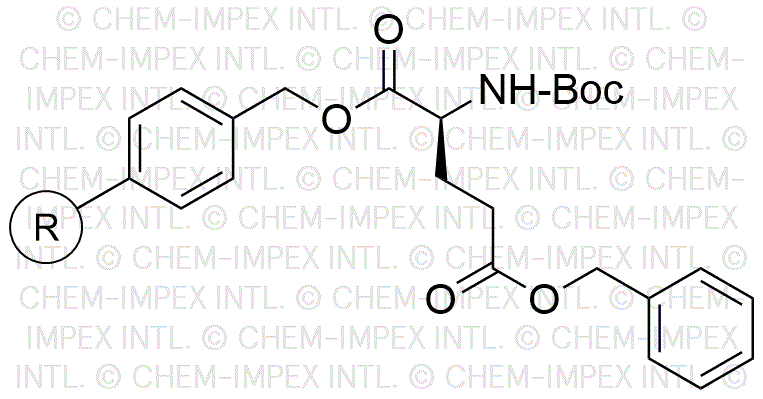Boc-L-glutamic acid g-benzyl ester Merrifield is widely utilized in research focused on:
- Peptide Synthesis: This compound serves as a key building block in the synthesis of peptides, allowing researchers to create complex structures for various applications in drug development.
- Drug Development: Its derivatives are often explored in pharmaceutical research for their potential therapeutic effects, particularly in targeting specific diseases.
- Bioconjugation: The compound can be used in bioconjugation processes, linking biomolecules to enhance the efficacy of drugs and diagnostics.
- Research in Neuroscience: It plays a role in studying neurotransmitter functions, contributing to the understanding of neurological disorders and potential treatments.
- Material Science: The compound is also explored in the development of novel materials, particularly in creating hydrogels for drug delivery systems.
General Information
Properties
Safety and Regulations
Applications
Boc-L-glutamic acid g-benzyl ester Merrifield is widely utilized in research focused on:
- Peptide Synthesis: This compound serves as a key building block in the synthesis of peptides, allowing researchers to create complex structures for various applications in drug development.
- Drug Development: Its derivatives are often explored in pharmaceutical research for their potential therapeutic effects, particularly in targeting specific diseases.
- Bioconjugation: The compound can be used in bioconjugation processes, linking biomolecules to enhance the efficacy of drugs and diagnostics.
- Research in Neuroscience: It plays a role in studying neurotransmitter functions, contributing to the understanding of neurological disorders and potential treatments.
- Material Science: The compound is also explored in the development of novel materials, particularly in creating hydrogels for drug delivery systems.
Documents
Safety Data Sheets (SDS)
The SDS provides comprehensive safety information on handling, storage, and disposal of the product.
Product Specification (PS)
The PS provides a comprehensive breakdown of the product’s properties, including chemical composition, physical state, purity, and storage requirements. It also details acceptable quality ranges and the product's intended applications.
Certificates of Analysis (COA)
Search for Certificates of Analysis (COA) by entering the products Lot Number. Lot and Batch Numbers can be found on a product’s label following the words ‘Lot’ or ‘Batch’.
Numéro de catalogue
Numéro de lot/série
Certificates Of Origin (COO)
This COO confirms the country where the product was manufactured, and also details the materials and components used in it and whether it is derived from natural, synthetic, or other specific sources. This certificate may be required for customs, trade, and regulatory compliance.
Numéro de catalogue
Numéro de lot/série
Safety Data Sheets (SDS)
The SDS provides comprehensive safety information on handling, storage, and disposal of the product.
DownloadProduct Specification (PS)
The PS provides a comprehensive breakdown of the product’s properties, including chemical composition, physical state, purity, and storage requirements. It also details acceptable quality ranges and the product's intended applications.
DownloadCertificates of Analysis (COA)
Search for Certificates of Analysis (COA) by entering the products Lot Number. Lot and Batch Numbers can be found on a product’s label following the words ‘Lot’ or ‘Batch’.
Numéro de catalogue
Numéro de lot/série
Certificates Of Origin (COO)
This COO confirms the country where the product was manufactured, and also details the materials and components used in it and whether it is derived from natural, synthetic, or other specific sources. This certificate may be required for customs, trade, and regulatory compliance.


